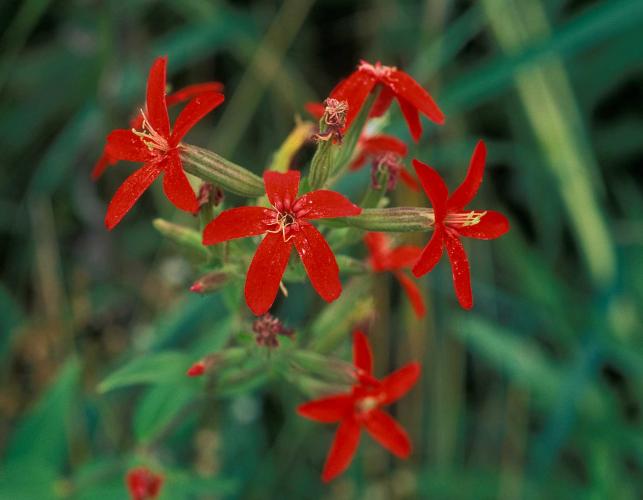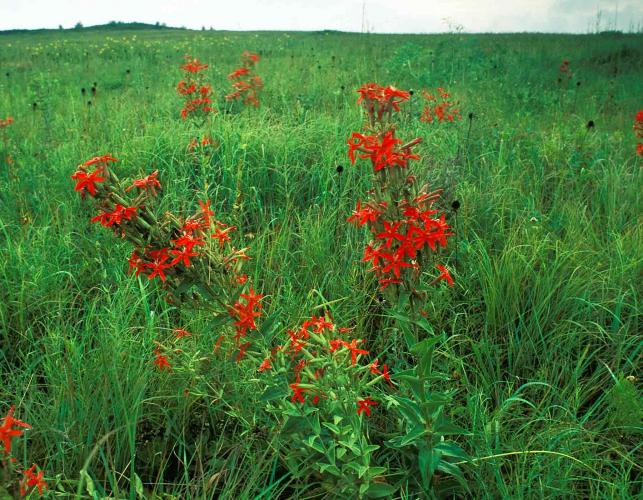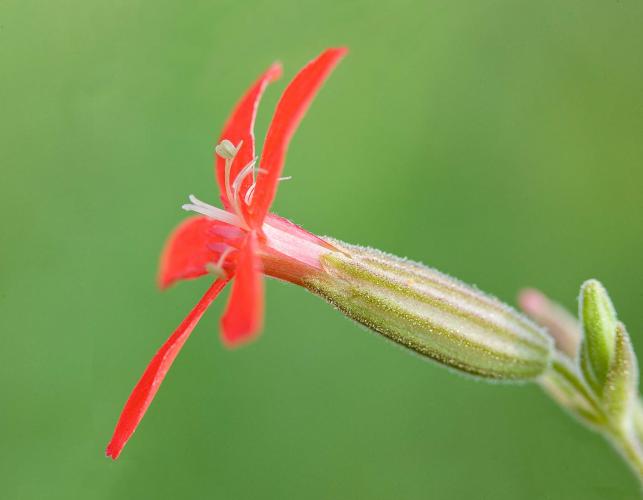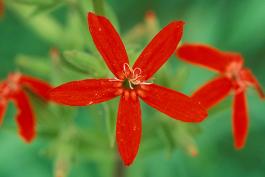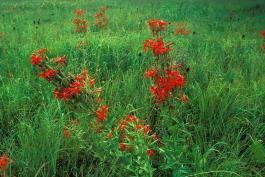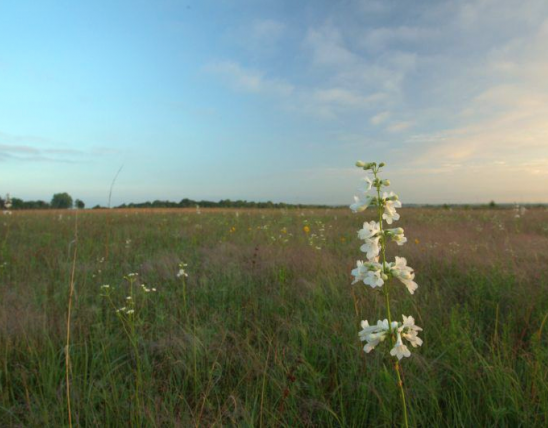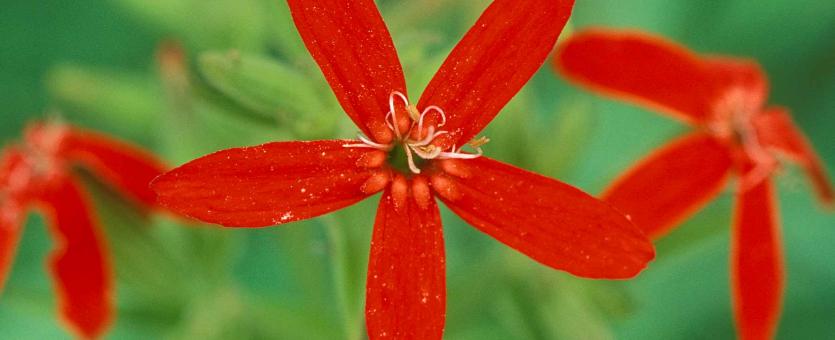
Erect, unbranched perennial plants topped with open clusters of bright red flowers. Flowers with 5 petals, each entire or finely toothed at the tip but rarely notched and never lobed; bright red; with a pair of small appendages on the upper surface at the base of the expanded portion. Blooms May–October. Stems with short, stiff, down-pointed hairs at the base, and stalked glands toward the top. Basal leaves usually absent by flowering time. Stem leaves opposite, sessile, ovate to lanceolate, tapered, rounded or heart-shaped at the base, the surfaces more or less roughened and hairy or smooth.
Height: 2 to 4 feet.

Scattered in the Ozark and Ozark Border natural divisions; uncommon along the southern edge of the Unglaciated Plains. Cultivated statewide.
Habitat and Conservation
Upland prairies, glades, tops of bluffs, savannas, rocky openings of forests, fencerows, railroads, and roadsides. A spectacular plant of the tallgrass prairie, royal catchfly is threatened by habitat destruction and degradation throughout its range. Missouri has most of the world's populations of this plant, but many of these are along roads and other degraded habitats.
Human Connections
This is another great plant for native gardening. It is easily propagated by seeds and also is available for sale at most native plant nurseries in the state. Please don’t dig them from the wild.
Ecosystem Connections
Butterflies, including some swallowtail species, and hummingbirds are attracted to the nectar of these bright red flowers. The rather deep tubular portion of the flower favors pollinators with long tongues.

